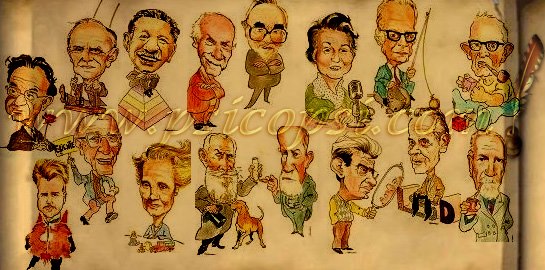CONCLUSIONES
A menudo, en la práctica cotidiana, se nos presenta un niño o adolescente
incapaz de autorregular su conducta de modo adecuado y según
las exigencias del entorno; pero que, a su vez, despierta en
nosotros la sensación íntima, y hasta la firme convicción, de que,
independientemente de su cociente intelectual o de su diagnóstico
académico, ese paciente tiene ‘más’ dentro de sí que lo que realmente
demuestra, y que si lograse mejorar esas habilidades de autocontrol
aumentaría su eficiencia y su vida sería mucho más fructífera y feliz.
El tema de las FE parece estar muy implicado en la imagen
descrita. Constituye, ciertamente, un campo de investigación
incipiente, pero de gran interés, no sólo teórico, sino también
práctico, en el que merece profundizarse.
BIBLIOGRAFÍA
1. Ozonoff S. Componentes de la función ejecutiva en el autismo y otros
trastornos. In Russell J, ed. El autismo como trastorno de la función
ejecutiva. Madrid: Médica Panamericana; 2000.
2. Ciesielski K, Harris R. Factors related to performance failure on executive
tasks in autism. Child Neuropsychology 1997; 3: 1-12.
3. Culhane-Shelburne K, Chapieski L, Hiscock M, Glaze D. Executive
functions in children with frontal and temporal lobe epilepsy. JINS Journal
of the International Neuropsychological Society 2002; 8: 623-32.
4. Maerlender A, Isquith PK, Gerson A, Gioia G. Executive contributions
to children’s emotional and behavioral functioning. JINS Journal of the
International Neuropsychological Society 2003; 9: 297.
5. Nation K, Adams J, Bowyer-Cane C, Snowling M. Working memory
deficits in poor comprehenders reflect underlying language impairments.
J Exp Child Psychol 1999; 73: 139-58.
6. Noel MP. Rôle de la mémoire de travail dans l’apprentissage du calcul.
In Van Hout A, Meljac C, ed. Troubles du calcul et dyscalculies chez
l’enfant. Paris: Masson; 2001. p. 171-8.
7. Seigneuric A, Ehrlich MF, Oakhill J, Yuill N. Working memory resources
and children’s reading comprehension. Reading and Writing:
An Interdisciplinary Journal 2000; 13: 81-103.
8. Pineda DA. La función ejecutiva y sus trastornos. Rev Neurol 2000;
30: 764-8.
9. Van Hout A. Bases neurologiques des troubles du calcul chez l’enfant.
In Van Hout A, Meljac C, ed. Troubles du calcul et dyscalculies chez
l’enfant. Paris: Masson; 2001. p. 276-305.
10. Junqué C. El lóbulo frontal y sus difunciones. In Junqué C, Barroso J,
eds. Neuropsicología. Madrid: Síntesis; 1997. p. 378-9.
11. Pennington B, Rogers S, Bennetto L, Mcmahon-Griffith E, Reed T,
Shyu V. Pruebas de la validez de la hipótesis de la disfunción ejecutiva
en el autismo. In Russell J, ed. El autismo como trastorno de la función
ejecutiva. Madrid: Médica Panamericana; 2000. p. 139-75.
12. Sánchez-Carpintero R. Patología de las funciones ejecutivas en el niño
[tesis doctoral]. Pamplona: Universidad de Navarra; 2000.
13. Stuss D. Biological and psychological development of executive functions.
Brain Cogn 1992; 20: 8-23.
14. Lezak M. Neuropsychological assessment. 3 ed. New York: Oxford
University Press; 1995.
15. Lefebre A. ENE Examen neurológico evolutivo. Revista de Psicomotricidad
1980; 3: 65-70.
16. Denckla M. Revised neurological examination for subtle signs. Psychopharmacol
Bull 1985; 21: 773-89.
17. Korkman M, Kirk U, Kemp SL. NEPSY. A developmental neuropsychological
assessment. San Antonio TX: The Psychological Corporation; 1998.
18. Gioia GA, Isquith PK, Guy SC, Kenworthy L. Behavior rating inventory of
executive function. Lutz FL: Psychological Assessment Resources; 2000.
19. Isquith PK, Gioia G, PAR staff. Behavior rating inventory of executive
function. Software Portfolio (BRIEF-SP). Lutz FL: Psychological Assessment
Resources; 2002.
20. Beebe D, Byars K, Nichols A, Groesz L, Wells C. Psychometrics for a
shortened behavior rating inventory of executive functioning. JINS Journal
of the International Neuropsychological Society 2003; 9: 293.
21. Cwik M, Espy K. External validity of the BRIEF-P in normally developing
preschoolers. JINS Journal of the International Neuropsychological
Society 2003; 9: 297.
22. Gioia GA, Isquith PK, Espy K. Construct validity of the behavior rating inventory of executive function. Preschool version. JINS Journal of
the International Neuropsychological Society 2003; 9: 297.
23. Delis D, Kaplan E, Kramer J. Delis-Kaplan executive function system
(D-KEFS). San Antonio TX: The Psychological Corporation; 2000.
24. Emslie H, Wilson FC, Burden V, Wilson BA. Assessing executive functioning
in children with TBI and developmental disorder. JINS Journal
of the International Neuropsychological Society 2003; 9: 298.
25. McInerney R, Kerns K. The CMAT: a new test of multitasking and
executive function. JINS Journal of the International Neuropsychological
Society 2003; 9: 296.
26. Heaton R, Chelune G, Talley J, Kay G, Curtiss G. Test de clasificación
de tarjetas de Wisconsin. Manual. Madrid: TEA; 1997.
27. Flashman L, Horner M, Freides D. Note on scoring perseveration on the
Wisconsin card sorting test. The Clinical Neuropsychologist 1991; 5: 190-4.
28. Chelune GJ, Baer RA. Developmental norms for the Wisconsin Card
Sorting Test. J Clin Exp Neuropsychol 1986; 8: 219-28.
29. Rosselli M, Ardila A. Developmental norms for the Wisconsin Card Sorting
Test in 5 to 12 year-old children. Clin Neuropsychol 1993; 7: 145-54.
30. Kagan J. Individual differences in the resolution of response uncertainty.
J Pers Soc Psychol 1965; 2: 154-60.
31. Finch A, Deardorff P, Montgomery L. reflection-impulsivity of the
matching familiar figures test with emotionally disturbed children. Psychological
Reports 1974; 35: 1133-4.
32. Gordon M, Barkley R. Tests and observational measures. In Barkley R, ed.
Attention-deficit hyperactivity disorder. New York: Guilford Press; 1998.
33. Cairns E, Cammock T. Developmental norms of a more reliable version
of the matching familiar figures test. Dev Neuropsychol 1978; 11: 244-8.
34. Albaret JM, Benesteau J, Marquet-Doleac J. Test d’appariement
d’images. Paris: ECPA; 1999.
35. Servera M, Llabres J. Escalas Magallanes de impulsividad computarizadas
(EMIC). Madrid: Albor-Cohs; 2001.
36. Golden C. STROOP, test de colores y palabras. Manual. Madrid: TEA; 1994.
37. Gerstadt C, Hong Y, Diamond A. The relationship between cognition
and action: performance of children 3.5-7 years old on a Stroop-like
day-night test. Cognition 1994; 53: 129-53.
38. Diamond A, Taylor C. Development of an aspect of executive control:
development of the abilities to remember what I said and to ‘do as I
say, not as I do’. Dev Psychobiol 1996; 29: 315-34.
39. Anderson P, Anderson V, Lajoie G. The tower of London test: validation
and standardization for pediatric populations. Clinical Neuropsychol 1996; 10: 54-65.
40. Lussier F, Guérin F, Dufresne A, Lassonde M. Etude normative développementale
des fonctions exécutives: la tour de Londres. ANAE Approche
Neuropsychologique des Apprentissageschez l’Enfant 1998; 47: 42-52.
41. Culbertson W, Zillmer E. Tower of London (TOL). North Tonawanda
NY: Multi-Health Systems; 2001.
42. Shallice T. Specific impairments of planning. Philos Trans R Soc Lond
1982; 298: 199-209.
43. Porteus SD. Test des labyrinthes de Porteus. Paris: ECPA; 1965.
44. Wechsler D. Test de inteligencia para niños WISC III. Manual. Buenos
Aires: Paidós; 1994.
45. Cayssials A. La escala de inteligencia WISC-III en la evaluación psicológica
infantojuvenil. Buenos Aires: Paidós; 1998. p. 273-80.
46. Spreen O, Gaddes WH. Developmental norms for 15 neuropsychological
tests age 6 to 15. Cortex 1969; 5: 170-90.
47. McCarthy D. Escalas McCarthy de aptitudes y psicomotricidad para
niños. Madrid: TEA; 1988.
48. Chevrie-Muller C, Simon AM, Fournier F. L2MA. Batterie langage
oral, langage ecrit, memoire, attention. Paris: ECPA; 1997.
49. Semel E, Wing E, Secord W. CELF 3. Clinical evaluation of language
fundamentals. Spanish Edition. San Antonio TX: The Psychological
Corporation; 1997.
50. Kirk S, McCarthy J, Kirk W. ITPA. Test Illinois de aptitudes psicolingüísticas.
Manual. Madrid: TEA; 1986.
51. Mendilaharsu C. Estudios neuropsicológicos. Tomo III. Montevideo: Delta; 1981.
52. Spreen O, Strauss E. A compendium of neuropsychological tests. New
York: Oxford University Press; 1991.
53. Jones-Gotman M. Presurgical psychological assessment in children:
special tests. J Epilepsy 1990; 3 (Suppl): 93-102.
54. Gnys J, Grant-Willis W. Validation of executive function tasks with
young children. Dev Neuropsychol 1991; 7: 487-501.
55. Nassauer K, Halperin J. Dissociation of perceptual and motor inhibition
processes through the use of novel computarized conflict tasks. JINS Journal
of the International Neuropsychological Society 2003; 9: 25-30.
56. Fletcher J. Attention in Children: Conceptual and Methodological Issues.
Child Neuropsychology 1998; 4: 81-6.
57. Mahoene E, Koth C, Schuerholz L, Singer H, Denckla M. Clustering and
disinhibition on fluency and recall measures in Tourette syndrome and/
or ADHD [poster]. Bethesda: 27th Annual International Neuropsychological
Society; 1999.
58. Smidts DP, Jacobs R, Andreson V. Development of behavioral regulation
and social functioning in early childhood. JINS Journal of the International
Neuropsychological Society 2003; 9: 310.
59. Houston WS, Delis DC, Holdnack JA, Bondi MW. Intertest scatter on
the D-KEFS in the national normative sample: analysis of the primary
executive-function measures. JINS Journal of the International Neuropsychological
Society 2003; 9: 292.

